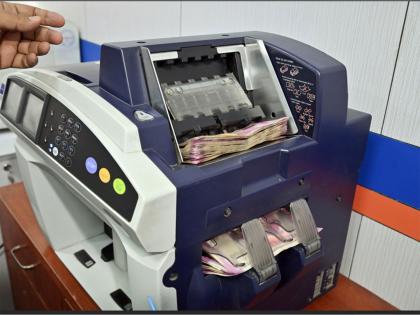Medium-term outlook for Rupee weaker, to depreciate 3-4% annually over three years against USD: UBI Report
By ANI | Updated: October 1, 2025 13:35 IST2025-10-01T13:30:44+5:302025-10-01T13:35:06+5:30
New Delhi [India], October 1 : The medium-term outlook for the Indian rupee remains tilted to the downside unless ...

Medium-term outlook for Rupee weaker, to depreciate 3-4% annually over three years against USD: UBI Report
New Delhi [India], October 1 : The medium-term outlook for the Indian rupee remains tilted to the downside unless there is relief from the persistent twin deficit, current account and fiscal deficit, according to a report released by Union Bank of India.
The report noted that while reversal in flows may temporarily hide the fair value of the rupee, structurally the bias continues to be for gradual depreciation.
It stated, "Near-term price action may be choppy, but the medium-term slope for INR remains lower unless there is relief from persistent twin deficit"
According to the report, over a three-year window, the rupee tends to adjust by approximately 3-4 per cent annual average depreciation. This is in line with the India-US inflation and interest rate differential.
It shared "As per our analysis, over a three-year window, the rupee tends to adjust approx. 3-4 per cent annual average depreciation".
The report explained that this trend, academically speaking, is consistent with the Balassa-Samuelson effect.
The theory suggests that countries experiencing higher productivity growth in tradable sectors will witness a real appreciation or depreciation of their currency over time.
It highlighted that while near-term price action for the rupee may be choppy, the medium-term slope continues to remain lower in the absence of sustained relief from fiscal and current account pressures.
Even though short-term reversal in flows may offer some support, the underlying pressures will continue to weigh on the domestic currency.
The report also pointed out that the rupee has slid to fresh record lows recently, and the move towards the USD 88-89 zone was aligned with fundamentals. The weakness in the currency, it stated, was not an anomaly but reflected structural issues.
It explained that the backdrop for this depreciation is threefold. First, trade still carries a tariff overhang, with talks ongoing but a final resolution not being the base case scenario.
Second, flows remain fragile after large year-to-date foreign portfolio investor outflows of around USD 16.24 billion, even though a tentative weekly turn has been seen. Third, sentiment continues to stay defensive due to uncertainties around trade policy.
The report particularly flagged risks such as the timing of the final U.S.-India trade deal, concerns over the H-1B visa fee hike, and the imposition of 100 per cent tariff on pharma exports.
These factors, Union Bank of India said, are keeping the "buy-USD-on-dips" behaviour intact among investors.
In conclusion, the report highlighted that while the rupee's short-term moves may reflect technical reversals, the medium-term outlook remains weak, and depreciation risks are likely to persist unless India finds relief from the enduring fiscal and current account deficits.
Disclaimer: This post has been auto-published from an agency feed without any modifications to the text and has not been reviewed by an editor
Open in app